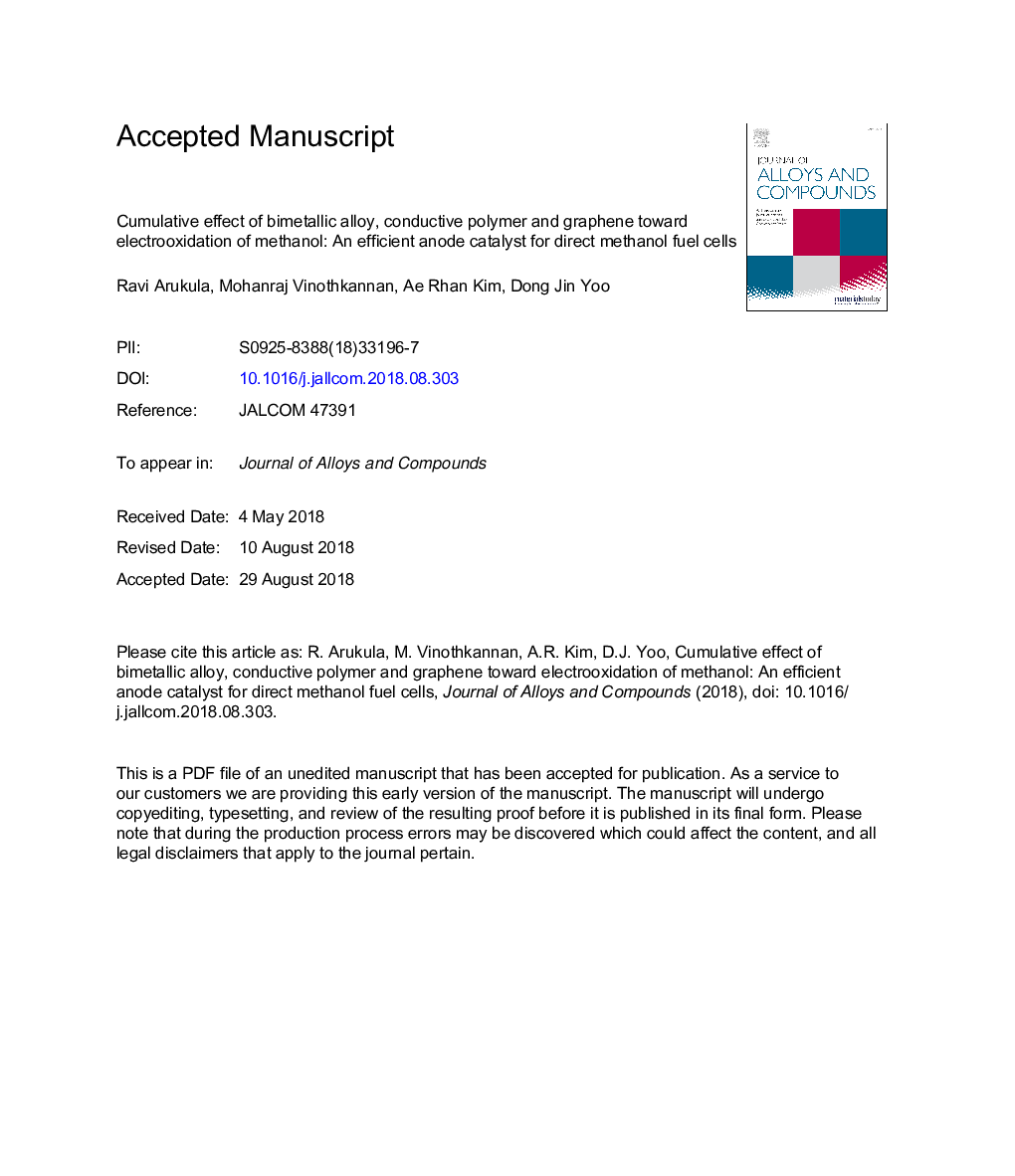| Article ID | Journal | Published Year | Pages | File Type |
|---|---|---|---|---|
| 10142184 | Journal of Alloys and Compounds | 2019 | 31 Pages |
Abstract
In this article, we report a wet reflux strategy for the synthesis of reduced graphene oxide (rGO)/polyaniline (PANI)/Pt-Pd composite, which was exploited as a potential anode catalyst with enhanced methanol oxidation capacity for direct methanol fuel cells (DMFCs). The construction of rGO/PANI/Pt-Pd involves two steps such as synthesis of PANI on GO and in-situ reduction of GO and metal precursors. The spherical shaped Pt-Pd particles with the average size of 3.5â¯nm are scattered throughout the surface of rGO/PANI, as observed from transmission electron microscope (TEM). PANI tailors the surface of rGO to allow the uniform scattering of Pt-Pd, which is beneficial for adsorption and decomposition of methanol. Besides, PANI generates strong interaction with Pt-Pd through nitride bond, thereby enhances the durability of composite. The cumulative features of rGO/PANI/Pt-Pd include active carbon support, extended architecture of electron conducting channels and number of methanol oxidation centers endows excellent DMFC power density of 117.45â¯mW/cm2 and concrete cell durability over 70â¯h. Therefore, the proposed rGO/PANI/Pt-Pd can be used to address various critical issues associated with commercial Pt/C catalyst.
Keywords
Related Topics
Physical Sciences and Engineering
Materials Science
Metals and Alloys
Authors
Ravi Arukula, Mohanraj Vinothkannan, Ae Rhan Kim, Dong Jin Yoo,
